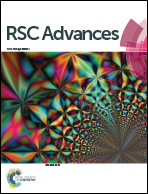Embedded structure catalyst: a new perspective from noble metal supported on molybdenum carbide†
Abstract
An embedded structure of noble metal (Pt) in situ supported on molybdenum carbide was found for the first time, which hindered Pt sintering at high temperature, and promoted the interaction between Pt and molybdenum carbide. This structure exhibited an excellent and stable catalytic activity for water gas shift reaction at low temperature.


 Please wait while we load your content...
Please wait while we load your content...